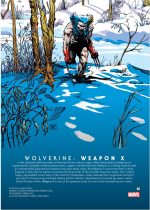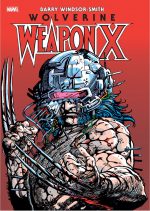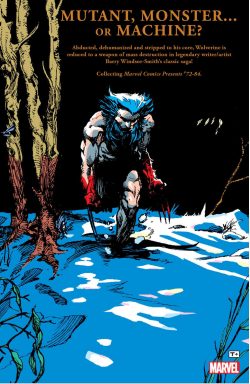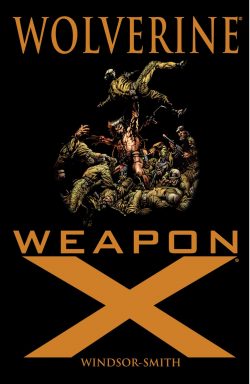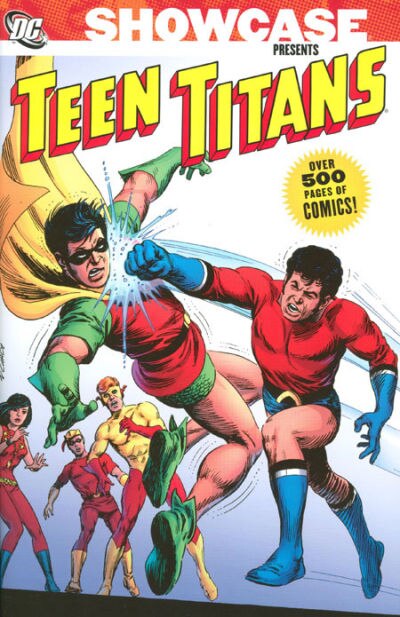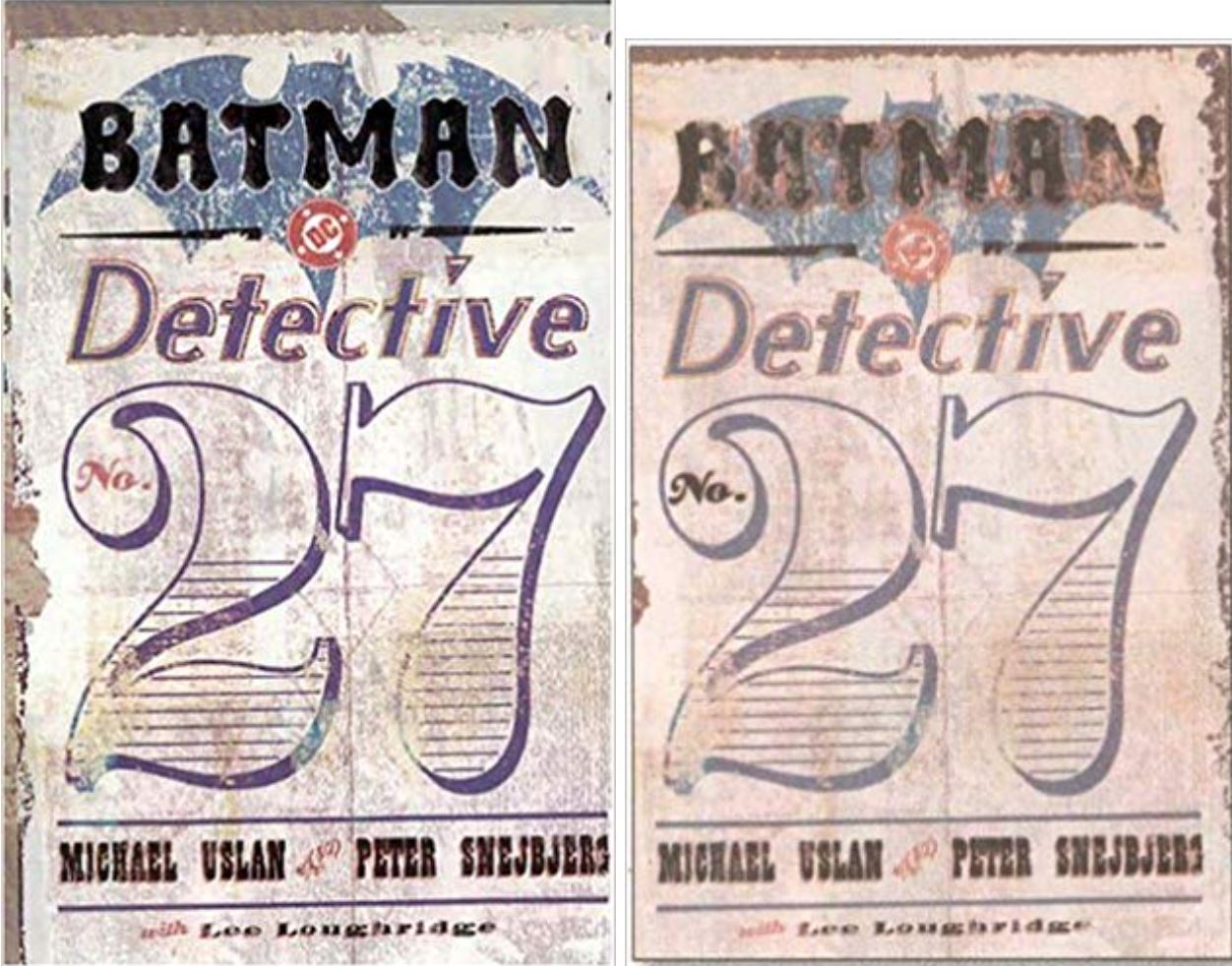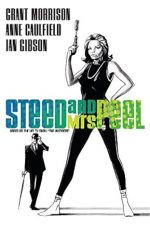

By André Franquin, Jidéhem & Greg, translated by Jerome Saincantin (Cinebook)
ISBN: 978-1-80044-135-4 (Album PB/Digital edition)
This book includes Discriminatory Content produced during less enlightened times.
Spirou (whose name translates as “squirrel”, “mischievous” and “lively kid” in the language of Walloons) was created by French cartoonist François Robert Velter – AKA Rob-Vel – for Belgian publisher Éditions Dupuis. The evergreen youngster in red was a response to the success of Hergé’s Tintin at rival outfit Casterman. In the beginning, the character Spirou was a plucky bellboy/lift operator employed by the Moustique Hotel (an in-joke reference to Dupuis’ premier periodical Le Moustique) whose improbable adventures with pet squirrel Spip evolved into astounding and often surreal comedy dramas.
The other red-headed boy adventurer debuted on April 21st 1938 in an 8-page tabloid magazine that bears his name to this day. Fronting a roster of new and licensed foreign strips – Fernand Dineur’s Les Aventures de Tif (latterly Tif et Tondu) and US newspaper imports Red Ryder, Brick Bradford and Superman – the now-legendary anthology Le Journal de Spirou expanded exponentially: adding Flemish-language edition Robbedoes on October 27th 1938, boosting page counts and adding action, fantasy and comedy features until it was an unassailable, unmissable necessity for continental kids.
Spirou and chums helmed the magazine for most of its life, with many notable creators building on Velter’s work, beginning with his wife Blanche “Davine” Dumoulin. She took over the strip when her husband enlisted in 1939, aided by Belgian artist Luc Lafnet until 1943, when Dupuis purchased all rights to the feature. Thereafter comic strip prodigy Joseph Gillain (“Jijé”) took over, until 1946 when his assistant André Franquin inherited the entire affair. Gradually, the new auteur retired traditional short gag vignettes in favour of longer adventure serials, introducing a wide returning cast. Ultimately, Franquin created his own milestone character. Phenomenally popular animal Marsupilami debuted in 1952’s Spirou et les héritiers and became a scene-stealing regular and eventually one of the most significant stars of European comics.
Jean-Claude Fournier succeeded Franquin: overhauling the feature over nine stirring serial adventures between 1969-1979 by tapping into a rebellious, relevant zeitgeist in tales of drug cartels, environmental concerns, nuclear energy and repressive regimes. By the 1980s, the series seemed stalled: three different creative teams alternated on the serial: Yves Chaland, Raoul Cauvin & Nic Broca and significantly Philippe Vandevelde writing as “Tome” & artist Jean-Richard Geurts – AKA Janry.
These last reverently referenced the revered and beloved Franquin era: reviving the feature’s fortunes over 14 wonderful albums between 1984-1998. On their departure the strip diversified into parallel strands: Spirou’s Childhood/Little Spirou and guest-creator specials A Spirou Story By…
Later teams and guests to tackle the wonder boys include Lewis Trondheim, Jean-Davide Morvan & Jose-Luis Munuera, Fabien Vehlmann & Yoann, Benoît Feroumont, Emile Bravo, Jul & Libon, Makyo, Toldac & Tehem, Guerrive, Abitan & Schwartz, Frank le Gall, Flix and so many more. By my count that brings the album count to approximately 92 if you include specials, spin-offs series and one-shots, official and otherwise. Happily, in recent years, even some of the older vintages have been reprinted in French, but there are still dozens that have not made it into English yet. Quelle sodding horreur!
Cinebook have been publishing Spirou & Fantasio’s exploits since October 2009, initially concentrating on bringing Tome & Janry’s superb pastiche/homages of Franquin before dipping into the original Franquin oeuvre and adding later tales by some of the bunch listed above, but for their 21st manic marvel they reached back all the way to 1959 for a purely Franquin-formulated furore. Originally serialised in LJdS #1048-1082 prior to its release as album Le prisonnier du Bouddha in March 1961, this slick tale of Cold War tensions, silly sci fi and outrageous satire sees the master in collaborative mode with Jidéhem (Jean De Mesmaeker) and Greg (Michel Regnier)…

On January 3rd 1924, Belgian comics superstar André Franquin was born in Etterbeek. Drawing from an early age, he began formal art training at École Saint-Luc in 1943. When the war forced the school’s closure a year later, Franquin found work at Brussels’ Compagnie Belge d’Animation as an animator. There he met future bande dessinée superstars Maurice de Bevere (Lucky Luke-creator “Morris”), Pierre Culliford/Peyo (creator of The Smurfs) and Eddy Paape (Valhardi, Luc Orient).
In 1945 everyone but Culliford signed on with Dupuis, and Franquin began his career as a jobbing cartoonist/illustrator. He produced covers for Le Moustique and scouting magazine Plein Jeu and, throughout those early days, was with Morris trained by Jijé. At that time main illustrator at Le Journal de Spirou, Jijé turned the youngsters and fellow neophyte Willy Maltaite – AKA Will (Tif et Tondu, Isabelle, Le jardin des désirs) – into a creative bullpen known as the La bande des quatre. This “Gang of Four” promptly revolutionised Belgian comics with their engaging “Marcinelle school” style of graphic storytelling.
Jijé handed Franquin all responsibilities for the flagship strip part-way through Spirou et la maison préfabriquée, (LJdS #427, June 20th 1946) and the eager beaver ran with it for two decades, enlarging the scope and horizons until it became purely his own. Almost every episode, fans would meet startling new characters like comrade/rival Fantasio or crackpot inventor The Count of Champignac.
Spirou & Fantasio became globe-trotting troubleshooting journalists, endlessly expanding their exploits in unbroken four-colour glory. They travelled to exotic places, uncovering crimes, capturing the fantastic and clashing with a coterie of extraordinary arch-enemies such as Zorglub and Zantafio. Along the way Franquin premiered one of the first strong female characters in European comics – competitor journalist Seccotine who is renamed Cellophine in current English translations.
In a splendid example of good practise, Franquin mentored his own apprentice cartoonists during the 1950s. These included Jean Roba (La Ribambelle, Boule et Bill), Jidéhem (Sophie, Starter, Gaston Lagaffe) and Greg (Bruno Brazil, Bernard Prince, Zig et Puce, Achille Talon), who all worked with him on Spirou et Fantasio. In 1955, a contractual spat with Dupuis led to Franquin signing up with rivals Casterman on Le Journal de Tintin, where he collaborated with René Goscinny and old pal Peyo whilst also creating raucous gag strip Modeste et Pompon. Franquin quickly patched things up with Dupuis and returned to LJdS, subsequently co-creating Gaston Lagaffe (AKA Gomer Goof) in 1957, but was still obliged to carry on those Casterman commitments too…
From 1959, writer Greg and background artist Jidéhem began regularly assisting Franquin, but by 1969 the master storyteller had reached his Spirou limit. He quit, taking his mystic yellow monkey with him…
His later creations include fantasy series Isabelle, illustration sequence Monsters and bleak adult conceptual series Idées Noires, but his greatest creation – and one he retained all rights to on his departure – was Marsupilami, which – in addition to comics – has become a megastar of screen, plush toy store, console and albums.
Plagued in later life by bouts of depression and cardiac problems, Franquin passed away on January 5th 1997, but his legacy remains: a vast body of work that reshaped the landscape of European comics.
Let’s review happier if undoubtedly scarier days here in a Cold War classic where Spirou and Fantasio revisit rural melting pot Champignac-in-the-Sticks after strangely losing touch with crackpot inventor and Merlin of mushroom mechanics Pacôme Hégésippe Adélard Ladislas de Champignac – the aforementioned Count of Champignac.
The idyllic hamlet is in turmoil with the incipient opening of this year’s Cattle Festival ramping up regular bucolic angst. Its picturesque streets are filled with self-determined cows and short-tempered farmers, meaning the two investigators really have to watch their steps…
Finding the ramshackle chateau turned into a super-secure fortress, the lads and Spip – in truth impatient, impolite Marsupilami – break into the once-familiar estate and discover it has become a wild kingdom of gigantic plants. Eventually rescued by their odd old friend from encroaching green hells, the boys are unaware the Count is concealing another guest – until
after many odd incidents they meet timid nuclear physicist, potential Soviet defector and fellow scientist of conscience Professor Nikolai Nikolayevitch Inovskiev. The hulking gentle giant has invented something that will change the world and doesn’t want its incredible power abused…
He calls his little box of tricks a Gamma Atomic Generator (GAG for short) and it can promote rapid and monstrous plant growth, create severe but localised weather effects and cancel gravity – and it fits into a jacket pocket…
As the boys endure an accidental indoor blizzard, two enemy agents observe from outside before being accidentally but painfully caught in the GAG’s destructive effects. Terrified of the device being misused by the capitalist West, they make plans to steal it back during the cattle show, but Spirou and Fantasio foil the scheme – but only after the GAG makes the farm fest a chaotic, never to be forgotten Fortean event for the entire village…
Thinking job done and world saved, our heroes are horrified to learn from the shellshocked spies that the GAG is not unique. In communist China, Inovskiev’s covert collaborator – American Harold W. Hailmary – is a prisoner of the People’s Republic and surely cannot hold out much longer in delivering them the magic box and all its secrets…
Coincidentally, at that moment in British-controlled Hong Kong, a smuggled message reaches the Chief of Police: an American is imprisoned somewhere in the heart of the Valley of the Seven Buddhas…
When dapper British agents Douglas and Harvey attempt to interview Champignac and the boys, they discover the missing Russian and implore them all to act in a manner Her Majesty’s Government would unofficially look kindly upon even as it turned a blind eye…
Soon, equipped with the GAG, Spirou, Fantasio, Spip and the Marsupilami are sneaking across the Chinese border and heading into one of the most eccentric and spectacular missions of their lives… one replete with deadly peril, fantastic feats, spectacular chases, tank battles and hairsbreadth escapes, all leavened with outrageous surreal slapstick and deviously trenchant satire…

This edgily exuberant yarn is packed with action, thrills and spills and also offers a remarkably even-handed appraisal of Cold War politics messaging and always-timely moral.
Readily accessible to readers of all ages and drawn with all the beguiling style and seductive wholesome élan which makes Asterix, Lucky Luke and Yakari so compelling, this is a truly outstanding – and funny! – tale from a long line of superb exploits, proving our heroes deserve to be English language household names as much as those series – and even that other kid with the white dog…
Original edition © Dupuis, 1960 by Franquin, Jidéhem & Greg. All rights reserved. English translation 2024 © Cinebook Ltd.











